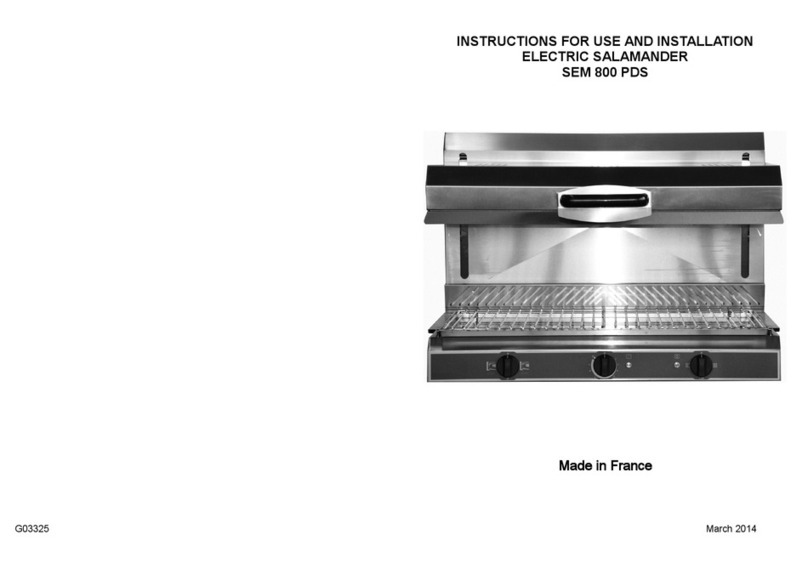
7 –Guidance on safe operation
Fire can be very dangerous
During operation, the stove and all the fittings (door handles and controls) get very hot.
Do not overfire the stove
It is possible to fire the stove to such an extent that excess smoke may be generated or damage may
occur. Look out for parts of the stove or flue glowing red hot. If such a situation occurs, adjust the air
supply accordingly to reduce the burning rate.
Chimney fire
In the event of a chimney fire:
•Shut all air controls immediately
•Raise the alarm and evacuate the building
•Call the fire brigade
•Do not re-enter the building
Fumes
If installed, operated and maintained correctly, the stove will not emit fumes into the room other than
occasionally very small amounts when re-fuelling or de-ashing.
If fumes are being emitted during normal operation:
•Ventilate the room by opening all doors and windows.
•Let the fire burn out
•Leave the room
•Check the stove, flue and chimney for blockages
•Do not re-use the stove until the cause of the problem has been identified and rectified.
•If required, seek expert help.
Adverse weather conditions
In a small number of installations, very occasionally in specific weather conditions (direction of wind) the
draw of the chimney may be affected causing a downdraught and fumes to be emitted into the room.
If this is the case, the stove should not be used and advice should be sought from a professional flue
installer who would be able to advise on possible solutions such as an anti-downdraught cowl.
8 - Maintenance
Before use
Between fires in the stove it is good practice to keep ash and debris to a minimum. Especially empty the
ash pan and ash pan section. Remember that if only burning wood it is recommended to keep a bed of
ash about 1cm thick on the grate.
Cleaning the stove
Clean the outside of the stove with a soft brush.
Regularly remove and clean the baffle and back and side air bricks of soot and debris. Also clean the
internal surfaces of the stove. The frequency of cleaning will be dependant on how vigorously the stove
has been fired and what fuel has been used.
Any deposits allowed to build up in this area could reduce the lifespan of the stove.
Note that if required, the flue can be accessed for cleaning from inside the stove.
Gaskets
The rope gaskets in both doors will need regular inspection to check the condition and to ensure that
the doors seal, and full control of the air supply to the fire can be maintained.
Stove glass
Clean the stove glass only when cool with a specialist glass cleaner. Use of any abrasive cleaner will
scratch the glass and make subsequent cleaning more difficult.
Chimney
It is important to have the chimney cleaned at least once a year.
Regular inspection and cleaning of the internal components of the stove can indicate if the chimney
requires more frequent cleaning.
If the stove has been unused for an extended period (during the summer), the chimney should be
checked by a competent person before use.
Note:
All parts that are in direct contact with the fire (grate, baffle, back and side air bricks, and underside top
airbox) are considered as normal wear parts. Their life will be dependant on how vigorously the stove is
operated and they must be inspected and maintained on a regular basis. If they become worn,
damaged or not positioned correctly, non wear parts such as the stove top and sides will be exposed to
excessive heat and may be damaged.
Remember
Maintenance should only be carried out when the stove is cool.
If the stove is not to be used for an extended period, set both air controls to half open to
allow an airflow through the stove and avoid condensation.




























